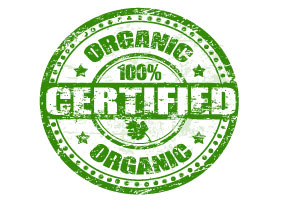
Organic Labeling Easy to Decipher
By Dave Carter | 0 Comments | Posted 09/20/2014
When the USDA Organic Standards were developed years ago, the folks who wrote the regulations developed a fairly straightforward set of rules for the labels to make sure that customers could easily make some informed choices. The only drawback is that we haven’t done a very good job of letting our customers know these simple rules.
So, here’s a quick primer on understanding organic labeling on foods in the store.
There are three different categories for labeling: 100% organic, organic, and Made With organic.
The highest standard, 100% organic, is just what it says. An apple or peach that is organically grown can be certified as 100% organic. Pretty simple.
The organic category is a bit more complex. This was created to cover foods made with multiple ingredients. Ingredients like baking soda and calcium carbonate don’t have an organic equivalent. So, products certified as organic must contain at least 95% organic ingredients (excluding water and salt). The other 5% must be organic, if an organic ingredient is available. Otherwise, those ingredients are limited to items that are included on something known as The National List. That list is governed by the National Organic Standards Board, which determines if a material on the list is compatible with organic principles. Genetically modified materials, for example, are prohibited from being added to the National List.
Both the 100% organic product and the organic product will generally include the USDA organic seal on the front label.
The third category, Made With organic, covers products that have at least 70% organic ingredients, by weight, not counting water and salt. Although manufacturers have a wider latitude in using the other 30% of the ingredients, they cannot use anything that is genetically modified, irradiated, or grown in fields fertilized with sewage sludge. Products certified in the Made With category cannot carry the USDA organic seal.
Speaking of certified, there’s another important item on every package in one of these three labeling categories. Somewhere on the side or back panel, directly underneath the information about the manufacturer or distributor of the product, the package will contain the words “Certified organic by…” That will list the name of the agency that verifies that the product meets the organic standards. Those agencies are regularly audited, and subject to stiff penalties if they don’t do their job.
Okay, so it’s still a little bit complex. But, making sure you are getting what you pay for requires a bit of complexity.


 Contact us
Contact us



























